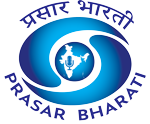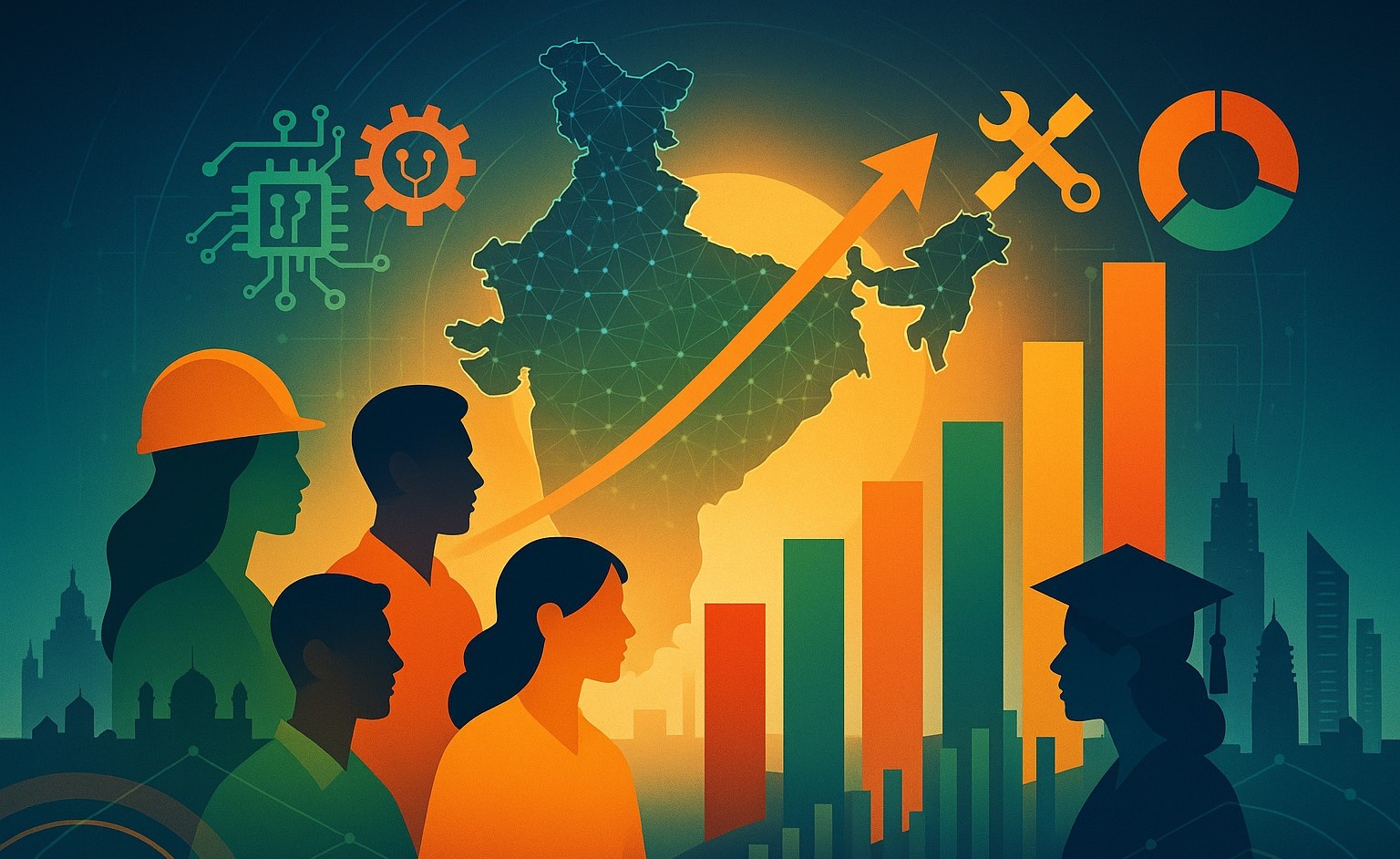India’s growth story is a story of youthful ascent. The country’s demographic dividend is at the core of the fastest-growing major economy in the world. It is expected to play a significant role in India’s promising economic future, when the global economy is projected to slow down. The world’s most populous nation, India is also the youngest among the major economies, with a median age of around 28 years.
A McKinsey assessment, published in July 2024, puts the median age of the population in India at 27.6 years, a full decade younger than the citizens of most other major economies. Apart from contributing to increased productivity, the demographic dividend has the potential to transform the growth story on a positive social scale. If the nation’s productivity is harnessed well with the demographic advantage it has, and the working-age population base is properly skilled and productively employed, millions could be lifted not only above the poverty line but also be economically empowered.
“In India, as with other G-20 economies, economic growth and business innovations will be critical to future economic inclusion; in fact, these levers could erase more than 90 percent of the empowerment gap. To put that in human terms, accelerated economic growth and business-led innovation alone could lift about 700 million people above the threshold by 2030,” says the report.
What is the line of economic empowerment? As defined by the McKinsey Global Institute, being economically empowered means having a decent economic condition that affords a nutritious meal, good education and healthcare, a house that is owned with water and sanitation, and access to energy sources such as a power connection and means of transportation.
Being economically empowered means having the value addition that life needs, going beyond the economic inclusion threshold. With a minimum of $12 per day in PPP terms, a person, after fulfilling their needs to sustain a good lifestyle, can also save money, meaning they are a level above the risk of falling into the poverty cycle again. The report said that globally there were 4.7 billion people (or 60% of the world’s population) not economically empowered as per this benchmark.
Harnessing the demographic dividend is a calculated task, demanding sustained investment in education and the promotion of industrial collaboration, together with a thriving skilling system. The foundational ingredients of this requirement prime the nation for an era of unprecedented human-led growth.
According to the Ministry of Skill Development and Entrepreneurship, 65% of India’s population is under 35 years of age, and the country has seen a significant positive change in the last decade in the headcount ratio available for employability. Before 2014, the country had 33.9% employable final- or pre-final-year students. This increased by over 17% to 51.3% in 2024.
The current government in the country is focused on harnessing this demographic dividend, creating a pool of skilled and talented youth to support its national and industrial growth on India’s journey of outstanding economic growth.
With an aim to become a developed country by 2047, the 100th year of its independence, with an economy crossing the $30 trillion mark in real GDP terms, the focus is on creating millions of trained and skilled youth ready for different industrial sectors. Many flagship training initiatives have been launched for this, including the Pradhan Mantri Kaushal Vikas Yojana (PMKVY) scheme, Jan Shikshan Sansthan (JSS), and National Apprenticeship Promotion Scheme (NAPS), under the Skill India Mission (SIM), creating millions of trained and skilled youth so far.
To put it in absolute numbers, over 60 million Indians have been empowered through various government initiatives, says data from the Ministry of Skill Development and Entrepreneurship, the Government of India. PMKVY has trained over 16 million youth across different sectors including advanced emerging training fields like AI, Robotics, and IoT. Last year, in October, another flagship scheme was launched, known as the Prime Minister’s Internship Scheme (PMIS). Under the scheme, one crore youth will be given paid internships of 12 months in India’s top 500 companies over five years.
Also, a young population base as the core of economic growth will have a dual advantage. An assessment published by EY in April 2023 on India’s demographic dividend deciphers this potential advantage. A young population base means more hands to be trained and skilled. A young population base also means a more consumption-based headcount, a factor that is good for markets and the overall economy. Consumption grows. Economy grows.
By 2030, India’s working-age population, among the major economies, will be the highest in the world, at 68.9% of its total population say the assessment. The country, then, will have 1.04 billion working-age people. It is, and will remain, the largest provider of human resources in the world, with the largest pool of STEM graduates (STEM: science, technology, engineering and mathematics), says the assessment. And it is an ever-widening pool, with an average annual addition of 2.14 million STEM graduates. India is also the country with the largest number of female STEM graduates. Earlier, the Western world dominated in having STEM graduates. Now it is the turn of emerging economies led by India.
WorldSkills International, a Netherlands-based not-for-profit organisation with 80 member countries, conducts the WorldSkills Competition every two years with participants under the age of 23. It is the largest skill competition in the world.
Over 50 skills under six sectors are the main focus areas – construction and building technology, transportation and logistics, manufacturing and engineering technology, information and communication technology, creative arts and fashion, and social and personal services. The outcome of the competition tests vocational excellence and sets a benchmark for high performance, and India’s position has seen a consistent improvement in its overall score tally on the overall points scorecard, from 16th in 2013 to fifth in 2024.
The roadmap to the $30 trillion target runs directly through India’s burgeoning urban centres. The 2024-25 annual report from the NITI Aayog notes that cities already function as the nation’s primary economic engines, generating between 70% and 80% of the entire national output. Cities are hubs of industrial clusters, housing small-, medium- and large-sized industries, run by manpower engaged directly and indirectly.
To further amplify this growth tool, or “making city regions growth hubs that can unlock their full potential” as the annual report says, the government launched the Growth Hub (G-Hub) initiative in 2023. “The Growth Hub (G-Hub) initiative aims to redefine urban planning for liveability and sustainability with pilot projects launched in Surat, Mumbai, Varanasi, and Visakhapatnam and blueprints approved for Surat and Mumbai,” the annual report adds. An increase in productivity means more skilled hands at work.
As one of the most important tools to drive India’s growth, the pool of the country’s skilled youth completes the growth curve of its resilient economy, solid macroeconomic fundamentals, and vast domestic market. While external shocks will inevitably arise, the direction of the journey points firmly upward.










